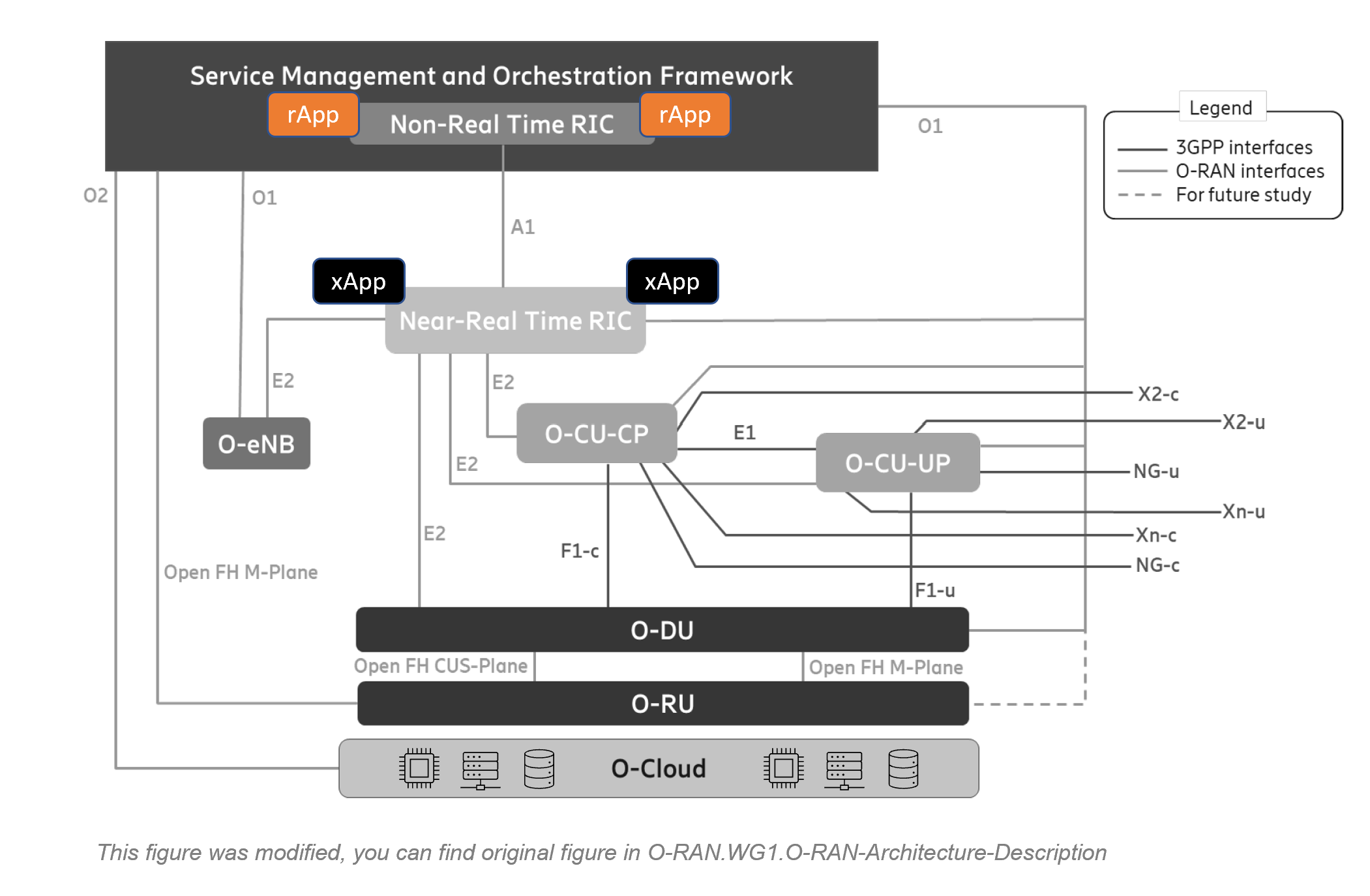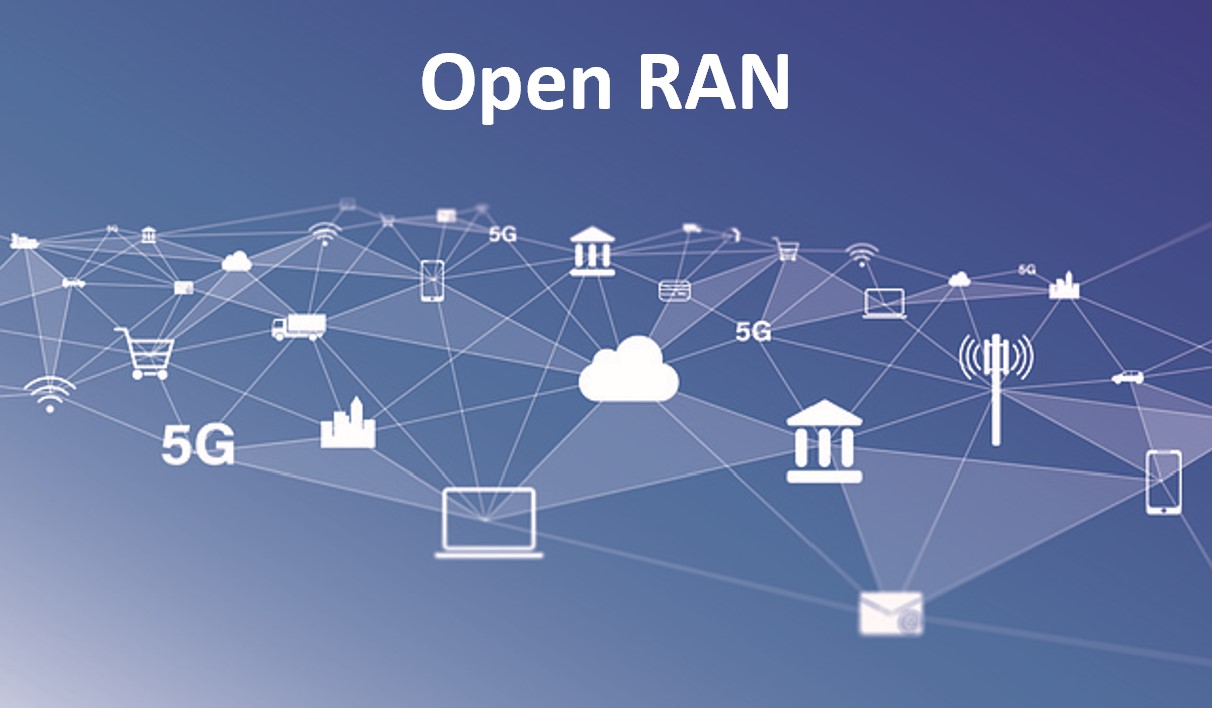At current era, all fields of telecommunication are moving forward much faster than comparing previous decades. Even though most of the MNOs have not deployed stand-alone 5G Core network yet, 6G becomes to be appear in the discussion platforms. One of the most prominent subjects in the telecom industry now is Open-RAN which promises to add obvious values and opportunities from giant vendors, operators and mainly to small vendors and start-ups.
Initially I planned to summarize overall Open RAN approach in one post with 3-4 pages, but it will not be possible and may reach up to 10 pages. That is the reason today we will talk about Open RAN architecture overview then upcoming series use cases and split options will be covered. I will try to put the key information with bullets to memorize well. Let’s start with:
– OpenRAN or O-RAN. Are both totally different or working for the same goal ? In a short answer the goal is same for Open RAN approach.
- Without hyphen or space, the term OpenRAN was initiated by Facebook and its partners, and the primary approach is to build 2G, 3G, 4G and 5G RAN solutions based on general-purpose vendor-neutral hardware, open interfaces, and software. It is under global community of organization and companies as Telecom Infra Project (TIP).
- O-RAN is an alliance of many organizations and companies for Open RAN approach. It generates specifications to be tested, produces solutions, and deployed by the vendors and operators respectively.
- So, we if can try recap the main difference between two groups as O-RAN group is to build standards for Open RAN approach and OpenRAN group is mostly to accelerate the development and deployment by the vendors and mobile network operators. This is what I could reach as conclusion so far, maybe later I will be able to find exact differentiation.
– What is the primary purpose of Open RAN approach?
- No more vendor lock-in necessity in RAN domain. It will urge to build multi-vendor ecosystem by the MNOs. Example, RRH can be supplied by Nokia, vDU/vCU can be supplied by Huawei and xApp can be provided by a small software company.
- Intelligent automated RAN domain management and optimization. 3rd party software developer companies will take major part on it with rApps and xApps (will talk about a bit later in this article with few use cases)
- If there is automation, it is obvious that cost saving will be one of the primary benefits of Open RAN solution. TCO or with complete name total cost of ownership will be reduced.
– How will above targets be achieved?
- Open and interoperable interfaces between multiple nodes of RAN domain. It means, different vendor products will operate smoothly with each other. That is the main job of O-RAN alliance to produce specifications.
- Usage of big data and AI/ML models to make more intelligent of traditional RAN domain.
– How is the high level of O-RAN specified Open RAN architecture ?

– Several new elements can be seen in this architecture like:
- O-Cloud
- O-RU
- O-DU
- O-CU-UP
- O-CU-CP
- O-eNB
- Near-Real Time RIC
- Non-Real Time RIC
- SMO (Service Management and Orchestration Framework)
– As well as several interface names may be not familiar with you:
- O2
- O1
- E2
- A1
- Open FH CUS-Plane
- Open FH M-Plane
- The rest are same with 3GPP specified like E1, F1-c, F1-u, X2-c X2-u, Xn-u, Xn-c, NG-c, NG-u
Before jumping to the introduction of each element and interface in this architecture, let me give a hint that, not everything is new name from scratch. Most of them are similar with 3GPP given name. Just O-RAN alliance added capital “O” in front of existing terms to present them as “Open”. Like vDU is presenting Virtualized DU and here it is O-DU.
- O-Cloud is a cloud computing platform with physical infrastructure (e.g., storage, network card, CPU etc.).
- O-DU (Distributed Unit), O-CU-UP (Central Unit – User Plane), O-CU-CP (Central Unit – Control Plane) may be virtualized network function (VNF) or container network function (CNF) on top of the O-Cloud.
- O-RU is Open Radio Unit, like traditionally known as RRH or RRU but now it supports interoperability with other vendors too. Virtualization of O-RU is future study according to the O-RAN specification.
- O-eNB is an enhanced version of eNodeB which is also known as ng-eNB can work under 5G Core. It is expected to support O-RAN specifications too.
– Near-Real Time RIC, let’s get more details about it:
- Near Real Time means operation and decision time is between 10ms-1s, it is very close to the real time processes of the network elements like in O-CU or O-DU.
- RIC is RAN Intelligent Controller, as cited above that one of the primary purposes of Open RAN approach is automation and management. That is the RIC is doing here.
- Near Real Time RIC collects fine-grained (detailed, low-level) information from the RAN elements through E2 interfaces and may use AI/ML models for further resource control or optimization of RAN elements.
- Near Real Time RIC can host 3rd party software applications which is called xApp, the amount may be one or more. The role of those xApps can be above mentioned actions like data collection, optimization.
- Near Real Time RIC can be hosted in O-Cloud infrastructure.
– SMO or Service Management and Orchestration Framework, it is similar conventional EMS (Element Management System in various domain like RAN or Core). But SMO has more capability and responsibility like:
- Cloud management and orchestration like scale-in, scale-out. Delete, create, modify resources and software management etc. All is done through O2 interface between SMO and O-Cloud.
- Fault management, configuration management, performance management of RAN elements. All is done through O1 interface between SMO and RAN elements.
- SMO and O-RU, there is an interface between these entities. It is called as Open Fronthaul Management Plane like abbreviated as Open FH M-Plane. SMO role here is to make O-RU start-up installation, software management, fault management, configuration management and performance management.
– Non-Real Time RIC:
- As the name is similar to Near-Real Time RIC, but now the execution times of use cases are not near real time and is almost 1 second or more.
- It is hosted within SMO
- Like Near-Real Time RIC, also Non-Real Time RIC can obtain 3rd party software applications, and it is called rApp. When we say 3rd party software application, the full set of SMO can also be supplied by the same vendor which depends on MNO chose.
- Primary roles of Non-Real Time RIC are to enable non-real time optimization of RAN elements, provide policy-based guidance to applications (xApps) of Near-Real Time RIC through A1 interface.
- Non-Real Time RIC also trains AI/ML models and makes data analytics.
References:
- O-RAN-Architecture-Description, Technical Specification
- Telecominfraproject (TIP)
- O-RAN Alliance
- NTT Docomo, 5G Open RAN Ecosystem

One thought on “Open RAN with Bullets – Part 1”